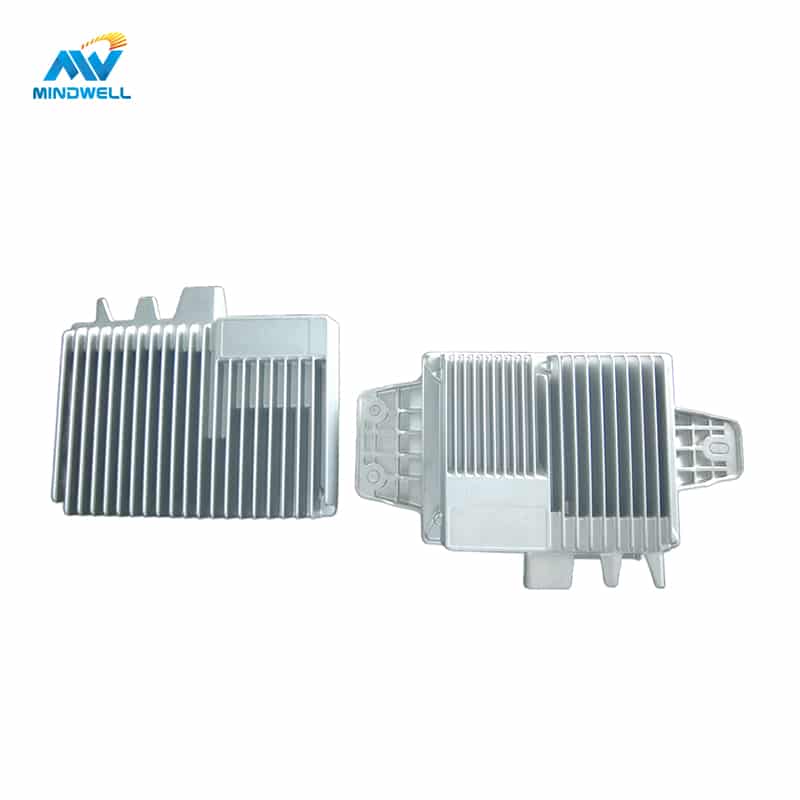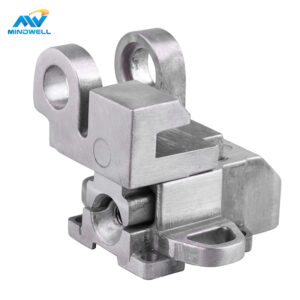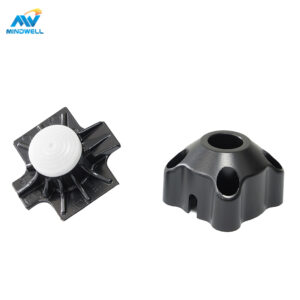I. Introduction to die casting automotive parts
Automotive manufacturing is an important part of modern industry, and die-casting technology plays a vital role in it. Die casting is a process in which molten metal is poured into a pressure chamber, and then high pressure is applied to fill the mold with the liquid metal and cool and solidify it into shape. This process is widely used in automobile manufacturing to produce various parts, such as engine parts, wheels, brake systems, intake manifolds, etc.
Die-cast автомобильные запчасти have very high requirements for precision. Precision not only affects the appearance of components but also their performance and safety. Any small error may lead to functional defects in parts and even cause safety accidents. Therefore, for the automotive manufacturing industry, precision is the lifeline and key to ensuring product quality and safety.
Die-casting is an efficient production method in the automotive manufacturing process. Through the die-casting process, high-quality parts can be produced on a large scale, which greatly improves production efficiency. At the same time, because the metal liquid is rapidly cooled and solidified under high pressure during the die-casting process, complex geometric shapes can be manufactured, giving the parts higher strength and stiffness.
Furthermore, another advantage of die-cast auto parts is their light weight. Because the metal liquid completely fills the mold during the die-casting process, it is possible to create parts with thin and uniform walls, which reduces the amount of material used and reduces the weight of the part. This has important implications for the modern automotive industry, as lightweighting is one of the key factors in improving fuel economy and reducing carbon emissions.
In conclusion, the die-casting process plays a vital role in automobile manufacturing. It not only improves production efficiency and reduces manufacturing costs, but also provides the possibility of lightweighting auto parts. At the same time, due to its high precision requirements, the die-casting process has become one of the key factors in ensuring the quality and safety of automotive products. At Mindwell, the die-casting process will continue to improve, providing more possibilities for the future development of the automobile manufacturing industry.

II. Materials used in die-cast automotive parts
The choice of materials for die-cast automotive parts depends primarily on the specific functions and requirements of the part. The following are our commonly used materials in die-cast automotive parts:
- Aluminum: Aluminum is a lightweight, high-strength metal with excellent corrosion resistance and thermal conductivity. In automobile manufacturing, aluminum is widely used to make components such as wheels, engine parts, and intake manifolds. Using aluminum not only reduces vehicle weight and improves fuel economy, but but it also increases component durability and performance.
- Zinc: Zinc is also a common die-cast material with good plasticity and corrosion resistance. In automobile manufacturing, zinc is used to manufacture body panels such as doors and hoods. The use of zinc can increase the corrosion resistance of components while also improving the aesthetics.
- Magnesium alloy: Magnesium alloy is a lightweight, high-strength metal material with excellent thermal conductivity and impact resistance. In automobile manufacturing, magnesium alloys are used to make parts such as seat frames and wheels. The use of magnesium alloys can further reduce vehicle weight and improve fuel economy, while also improving component durability and performance.
Material selection has an important impact on the durability and performance of the component. For example, aluminum and magnesium alloys have good corrosion resistance and high-temperature properties and are suitable for manufacturing parts exposed to the external environment, such as wheels and intake manifolds. Zinc has good corrosion resistance and aesthetics, and is suitable for manufacturing components such as body panels that require appearance quality.
In addition, different materials also have different mechanical and physical properties, so the specific requirements and functionality of the component need to be taken into consideration when selecting materials. For example, magnesium alloys have high strength and stiffness and are suitable for manufacturing parts that need to bear larger loads, such as seat frames and wheels. At the same time, magnesium alloy also has good thermal conductivity and impact resistance, and is suitable for manufacturing components that need to dissipate heat and withstand impact, such as engine components and brake systems.
In summary, when selecting materials for die-cast automotive parts, you need to consider factors such as the specific requirements and functionality of the part, as well as the physical and mechanical properties of the material. Proper material selection can improve product quality, performance, and durability while also reducing manufacturing costs and environmental requirements.

III. Automotive field applications
In the automotive field, die-casting technology is widely used to manufacture various parts. The following are some of the of the major applications:
- Engine components: Cylinders and pistons are one of the most important components in an engine, and they need to withstand harsh conditions such as high temperature, high pressure, and friction. Die-casting technology can produce high-quality cylinders and pistons, for example using lightweight materials such as aluminum or magnesium alloys, which can reduce the weight of the entire engine and improve fuel economy. In addition, die casting technology can also manufacture other parts in the engine, such as valves, valve spring seats, etc.
- Gearbox housing: The gearbox is an important part of the automobile’s transmission system, and it needs to withstand large torque and speed. Using die-casting technology, high-quality gearbox housings can be produced for optimal power transmission. In addition, die-casting technology can also manufacture other transmission system parts, such as clutch housings, reducer housings, etc.
- Chassis and structural components: The chassis is an important support structure of the car and needs to withstand large loads and impacts. High-quality chassis parts such as subframes, suspension arms, etc. can be produced using die-casting technology. At the same time, die-casting technology can also produce structural parts, such as vehicle frames, body frames, etc. These parts need to have high strength and stiffness to ensure the safety and stability of the vehicle.
In summary, die-casting technology plays an important role in automotive manufacturing by improving the quality, performance and durability of parts while reducing manufacturing costs and environmental requirements. With the continuous development of science and technology, die-casting technology will continue to advance and improve, providing more possibilities for the future development of the automobile manufacturing industry.
IV. Advantages of Die Casting in Automotive Manufacturing
Improved efficiency of mass production: Die casting is an efficient production method that can achieve large-scale automated production. Through the use of die-casting machines, a large number of parts can be manufactured quickly and accurately, greatly improving production efficiency. This efficient production method reduces production costs, reduces manual operations, and reduces the impact of human factors on product quality.
Design flexibility to customize parts to improve performance: Die-casting technology can create a variety of different shapes and structures of parts, allowing for high design flexibility. This design flexibility allows automakers to customize the most suitable parts based on different needs and performance requirements. By optimizing the design and manufacturing process of parts, the performance and reliability of parts can be further improved, thereby improving the performance and safety of the entire vehicle.
Surface treatment technology is aesthetically pleasing and corrosion-resistant. Die-casting technology can be combined with surface treatment technologies, such as electroplating, spraying, etc., to make parts aesthetically pleasing and corrosion-resistant. By using different surface treatment technologies, parts of various colors and textures can be produced, adding to the beauty and luxury of the car. At the same time, surface treatment technology can also improve the corrosion resistance of components, thereby increasing the service life and reliability.
In short, die-casting technology plays an increasingly important role in automobile manufacturing due to its efficient production methods, flexible design and surface treatment technology. With the continuous development of science and technology, die-casting technology will continue to advance and improve, providing more possibilities for the future development of the automobile manufacturing industry.

V. FAQs About Die Cast Automotive Parts
Q1: What materials are commonly used for die-casting automotive parts?
A1: Commonly used materials for die-cast auto parts include aluminum, zinc, magnesium alloy, etc. These materials are lightweight, high-strength, and corrosion-resistant and are suitable for various parts in automobile manufacturing.
Q2: What are the advantages of these materials in automobile parts manufacturing?
A2: These materials have the following advantages in the manufacturing of automotive parts:
Lightweight: These materials are relatively lightweight, which reduces vehicle weight, thereby improving fuel economy and performance.
High strength: These materials have high strength and stiffness and can withstand large loads and impacts.
Corrosion Resistance: These materials have good corrosion resistance, which can extend the life of the parts.
Aesthetics: These materials can also improve the aesthetics and corrosion resistance of parts through surface treatment technologies such as electroplating and spraying.
Q3: What are the impacts of die-cast auto parts on fuel efficiency and the environment?
A3: The manufacturing and use of die-cast automotive parts has a certain impact on fuel efficiency and the environment. For example, using lightweight materials can reduce a vehicle’s weight, thereby improving fuel economy. At the same time, some die-casting materials can be recycled, which reduces the consumption of natural resources. In addition, die-casting technology can reduce waste and energy consumption in the production process, thus reducing the impact on the environment.
Q4: What are the applications of die-cast automotive parts in electric vehicles?
A4: Die-cast automotive parts are widely used in electric vehicles, such as battery boxes, motor housings, inverter housings, etc. These parts need to withstand higher voltages and currents, so they need to have higher insulation and strength. Die-casting technology can produce high-quality electric vehicle components that meet these requirements.
Q5: What are the safety standards for die-cast automotive parts?
A5: The safety standards of die-cast auto parts mainly include the following aspects:
Material quality: Die-cast materials should comply with relevant standards and regulations to ensure they have adequate strength, corrosion resistance and other performance requirements.
Manufacturing quality: The die-casting process should ensure the manufacturing accuracy and quality of parts, such as controlling parameters such as pouring temperature and pressure to ensure the structural stability and reliability of parts.
Testing and inspection: After the parts are manufactured, a series of tests and inspections should be conducted, such as strength testing, air tightness testing, etc., to ensure that their performance and quality meet relevant standards.
Safety assessment: For safety-related parts, such as braking systems, airbags, etc., a safety assessment should be carried out to ensure that they will not pose a threat to personal safety during use.
Q6: What are the expectations for future technological advancements in die-cast automotive parts?
A6: The technological progress of die-cast auto parts in the future is expected to be as follows:
Efficient manufacturing: With the development of automation and intelligent manufacturing technology, die casting will be more efficient, enabling faster and more accurate manufacturing processes.
Application of new materials: With the continuous development of new material technology, it is expected that more new and high-performance materials will be used in the manufacturing of automotive parts to improve product performance and reliability.
Customized design: As consumers’ demands for personalization continue to increase, it is expected that the design of die-cast auto parts will be more diversified and customized to meet the needs of different users.
VI.Заключение
In the above content, we can summarize the following key points of die-cast automotive parts:
- Material selection: Commonly used materials for die-cast automotive parts include aluminum, zinc, magnesium alloys, etc. These materials have the characteristics of light weight, high strength, corrosion resistance and other properties.
- Manufacturing process: Die-casting is an efficient production method that can achieve large-scale automated production and reduce production costs and the impact of manual operations on product quality.
- Design flexibility: Die-casting technology can produce parts of various shapes and structures, with high design flexibility, allowing automakers to customize the most suitable parts according to different needs and performance requirements.
- Fuel efficiency and environmental impact: The manufacture and use of die-cast automotive parts helps improve fuel efficiency and environmental performance. For example, the use of lightweight materials can reduce the weight of the vehicle and improve fuel economy. At the same time, some die-cast materials can be recycled, reducing consumption of natural resources.
- Safety standards: Die-cast automotive parts need to comply with relevant safety standards, such as material quality, manufacturing quality, testing and inspection, and safety assessment, to ensure that they will not pose a threat to personal safety during use.
- Technological progress: With the development of new material technology and automated and intelligent manufacturing technology, future technological progress of die-cast auto parts is expected to be more efficient, diversified, and customized to meet the needs of different users.
Mindwell’s commitment to the high quality and reliability of die-cast parts improves vehicle performance and safety. Our company’s leading die-casting technology helps enable lightweight vehicle designs, thereby improving fuel economy and reducing carbon emissions. In addition, we have a mold design team and a R&D team that can provide you with customized die-cast auto parts. Mindwell will continue to promote the development of the automotive manufacturing industry in the future and achieve greater performance and efficiency.








